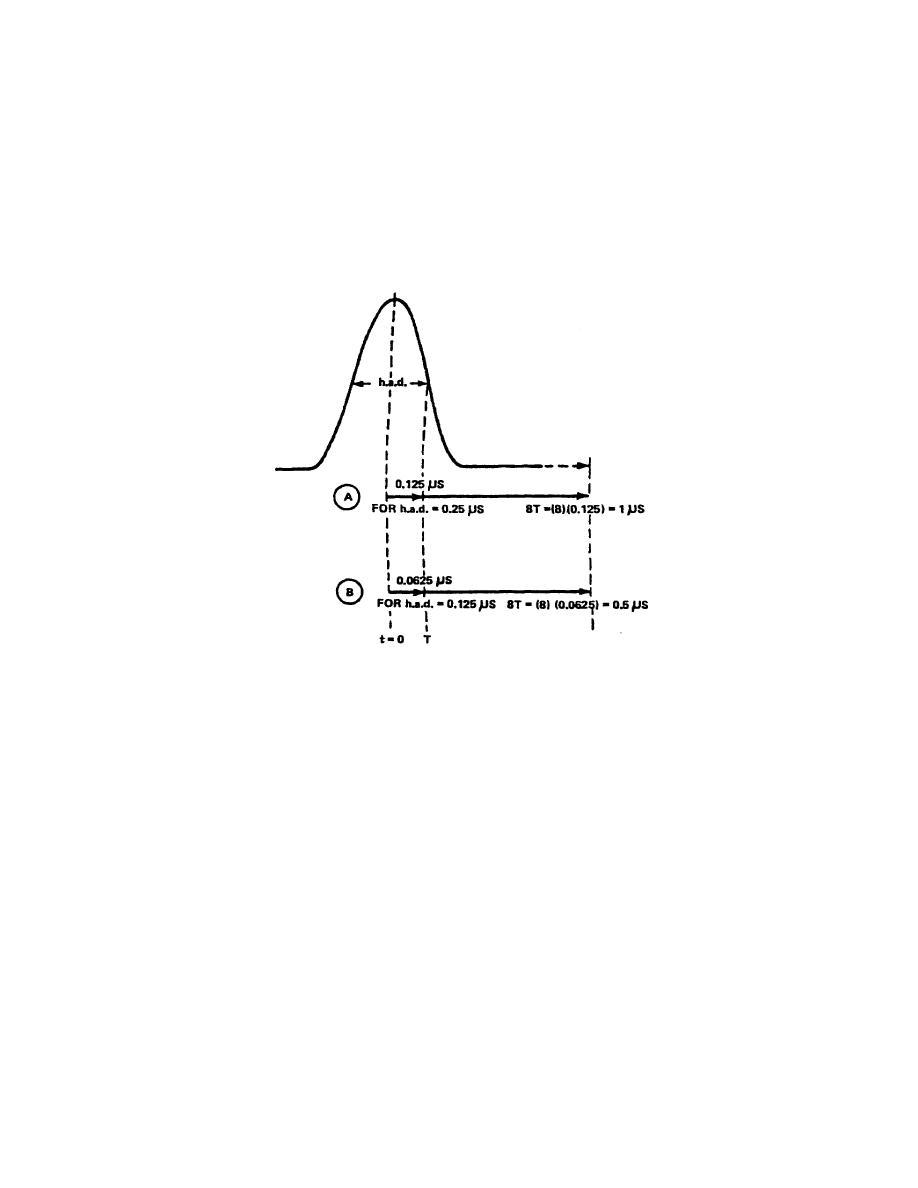
b. For the purpose of assigning a numerical value to a subjective assessment, we
can say that for a K-factor of 5 percent, picture impairment is noticeable to an
experienced and critical observer, whereas a K factor equal to or less than the
limits specified is not noticeable.
(1) In Figure 3-15, along the positive base of the transition, for h.a.d. =
0.250 microseconds the time from t = 0 to t = T is 0.125 microseconds (A in Figure
3-15).
Then the time to 8T is 8 x 0.125 = microseconds.
When h.a.d.
= 0.125
microseconds T = 0.0625 microseconds (B in Figure 3-15).
Therefore, 8T = 8 x
0.0625 = 0.5 microseconds. Obviously, the transition along the negative time base
is the same, but progresses in the opposite direction from t = 0.
Figure 3-15.
Pulse transition along positive time base
(2) Look at Figure 3-16, at plus and minus 8T, lines representing the limits
of the K-factor are spaced in reference to the amplitude at t = 0. If the K-factor
limit is to be 4 percent, then at the 8T points the lines are spaced plus and minus
4 percent of the amplitude at t = 0. Echos of larger amplitudes may occur closer
to the main transition with no increase in subjective picture impairment.
Note,
for example, that at 2T the limit increases to 4 times that at 8T. Thus, if the 8T
point has a K-factor of 4 percent, the 2T point is allowed an amplitude of 4 x 4 =
16 percent to fit within the 4 percent K-factor mask. Note also that the same mask
can be used for pulses of either 0.025 microseconds or 0.125 microseconds h.a.d.
by proper adjustment of the waveform monitor time base. The time base of 0.250H/cm
x 25 is the proper time base for the pulse with h.a.d. of 0.250 microseconds. For
the pulse with h.a.d.
of 0.125 microseconds, 0.125H/cm x 25 is the proper time
base.
63



 Previous Page
Previous Page
